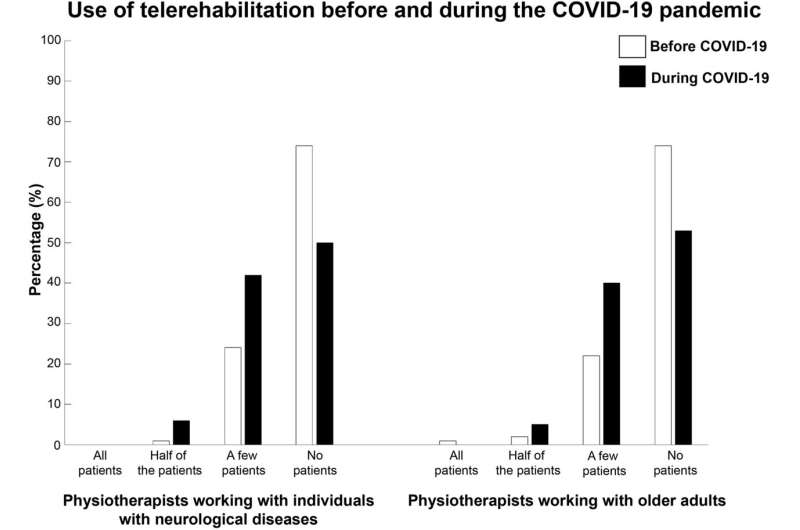Few physiotherapists provided rehabilitation services remotely to older adults or patients with neurological diseases during the pandemic, according to a new study from Karolinska Institutet published in BMC Health Services Research. The result sheds light on the importance of strengthening the expertise regarding remote rehabilitation services among physiotherapists, and to develop user-friendly digital tools for rehabilitation.
Besides the direct health effects of the pandemic, such as illness and death from COVID-19, there are also indirect health effects due to changes in lifestyle. Older adults or people living with a pre-existing disease are not only more vulnerable to the COVID-19 virus but they often have the need of rehabilitation or health-promoting services provided by a physiotherapist. Still, the ability to provide rehabilitation for these patients drastically changed during the pandemic.
307 physiotherapists answered a digital survey
In this study, the researchers aimed to study the implementation of telerehabilitation during the pandemic through support from different digital tools (e.g. telephone, video meetings, and mobile applications) in physiotherapists in Sweden. 307 physiotherapists working with older adults or patients with neurological diseases answered a digital survey regarding the use of remote rehabilitation and digital tools during the pandemic, including their own ability, perception and need for telerehabilitation.
A majority conducted rehabilitation on site
The result showed that a majority of physiotherapists did not conduct telerehabilitation neither before (74%) nor during (52%) the pandemic. Telephone was the most frequently used tool by the physiotherapists (68%) to follow up and give patient advice, while video meetings, mobile applications and digital platforms were used in a limited capacity. Factors perceived by the physiotherapists to limit the use of telerehabilitation, was the patients’ ability to use existing digital tools and the current reimbursement system that regulates health care. Despite this, most of the physiotherapists regarded telerehabilitation as an important part of rehabilitation and were interested in learning more on implementing this in their clinical work.
The need to develop telerehabilitation
The study highlights the difficulties and challenges in digitalization of rehabilitation and health promoting services in Sweden, which has also been reported earlier during the pandemic from patient organizations, among others.
“I see a great need to develop simple and user-friendly digital solutions to enable digital rehabilitation and health promotion for all patient groups,” says David Moulaee Conradsson, docent at the Department of Neurobiology, Care Sciences and Society (NVS), one of the authors of the study. “As a consequence of the pandemic, we have seen a general increase in the use of digital health care, but the implementation for older adults and patients with neurological disease have been slow, and more research is needed in collaboration with clinicians and patients to promote remote rehabilitation services.”
Related article:
Model finds COVID-19 deaths among elderly may be due to genetic limit on cell division
Can You Get Covid Twice In A Month? Record Shortest Gap Says Yes












